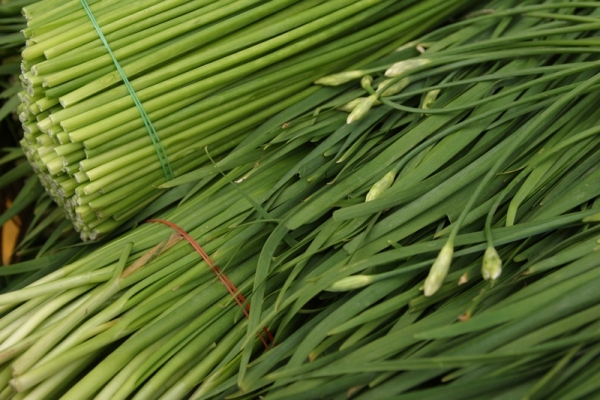Chinese garlic is famous for its beneficial properties.. It is known that it contains 25% carbohydrates, 7% fat, ascorbic acid and other compounds. In addition, it has an antibacterial effect, so it is often used for colds.
Table of contents
Chinese garlic - what is it? Plant description
Chinese garlic has a round shape with white skin. A special feature is the absence of a rod inside the head. That is why it is ranked as a spring species.
The teeth themselves are even, white in color, sometimes slightly purple in color at the edges - this indicates youth and strength. The number of teeth depends on the variety.
With the growth of Chinese garlic has a greenish color. But by harvesting it becomes completely white. The head can be up to 10 cm in length.
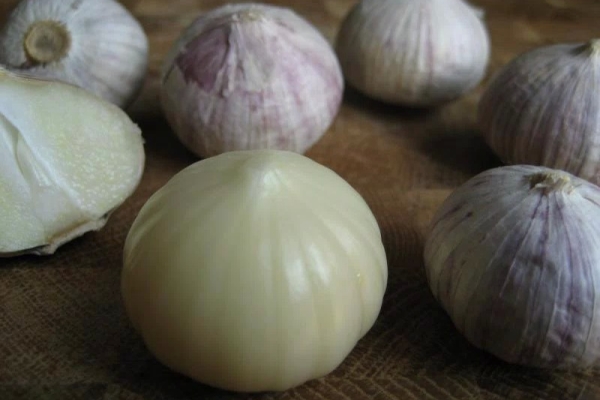
Names of fragrant field onions
Chinese onions in Russia are often called fragrant, but this is not true. The fragrant onion, though related to the onion species, does not have pronounced onions - they are not sufficiently developed.
However fragrant onion combines tastes of garlic and onion at the same time. That is why it is so popular both in Asia and in Russia.
Additional names: fragrant, branched, fragrant, savory, dzhusay, field. Each of the names assigned to the place of cultivation, with its own characteristics.
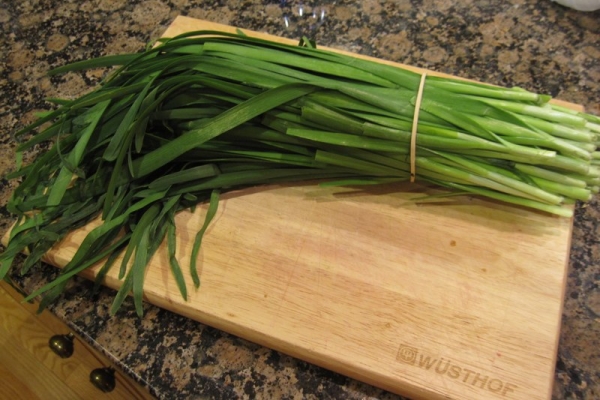
Origin of savory garlic dzhusay
Chinese garlic originally from China. This country grows more than 11 million tons of garlic per year, which is 75% of the garlic grown worldwide.
He is currently widely distributed in Asia, Siberia, the Far East, the Volga region.
Top Grades
Sail
Universal. Resistant to frost and long storage. In one head up to 9 cloves. The head itself is greyish. The stem reaches up to 70 cm in length. The head reaches up to 10 cm in length.
Sagittarius
Universal. Resistant to frost and long storage. When growing capricious, often sick. It has a "strong", strong smell. In one head is no more than 8 teeth. White colour.
Yelenovsky
Universal. Resistant to frost and long storage. In one head from three to six cloves. Color: gray-brown. The stem can reach up to 70 cm in length. Often sick.
Site preparation for sowing
To prepare the bed for sowing, you need:
- completely clear the ground of weeds and grass;
- fill with sand, sawdust and humus;
- dig up well.
It is advisable to start filling the future bed with minerals in the autumn so that it does not become completely “empty” over the winter.
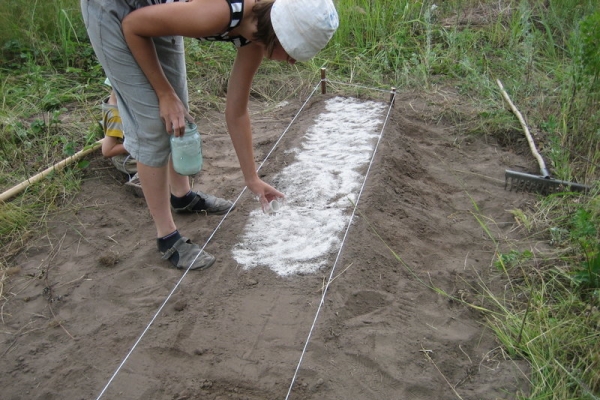
Cultivation from seeds and processes, sowing technology
It is best to plant garlic in the garden, preferably in early spring (April is best) when the snow has already come down and the ground is not so solid.
Seeding technology:
- already on the prepared bed to make not very deep holes;
- put humus, old leaves, fertilizers with nitrogen content on the bottom. This will help to decompose residues faster and fill the well with useful substances;
- put in the hole process of garlic;
- we drool;
- pour warm water.
It is worth considering that in the hole you can put both a small, young head, and one segment. The most important thing is to be intact.
For cultivation in Siberia suitable mid-May. You need to use only young heads, so that by September they have time to mature. The place itself should be sunny and warm.

In the case of growing garlic from seeds, you need:
- clean and dig up the ground;
- make grooves (you can just hold along the stick);
- sow the seeds evenly;
- to water.
Many recommend after planting to cover the seeds with a film. This will contribute to active growth. But in the mature stage, the film must be removed.
Sowing onion dzhusay:
Growing in a greenhouse
For cold regions, growing in a greenhouse is perfect. The heat will be there all summer, and onions will have time to ripen by August.
The technology of soil preparation and sowing is the same as in the open field. The only thing that watering and fertilizing will need even more.
Care rules
Loosening
Young onions need to regularly loosen. The first time, when the first leaves appeared. In the second - when strong stalks appeared.
When loosening you need to remember that you can not fall asleep garlic. On the contrary, you need to clean it, letting in fresh air.

Watering
It is necessary to water the garlic regularly, otherwise the leaves will become rough due to drought., dry, and the head itself can lose its sharp taste. In addition, they quickly crack.
Feedings
In country shops you can find a lot of spray tools, including for onion plants. As a universal remedy, you can simply dilute the urea in water and add to the watering can.
Harvesting
Harvest should be in late August and early September. By this time, they will be rather large, and the scales will be white or white-violet.
It is important not to be late with the cleaning, otherwise the leaves with the head will begin to crack. In this case, they will no longer be suitable for consumption or for cultivation.
As a rule, the spring species does not have a high yield, so the teeth will be up to 7-8 pieces.
Harvested with a pitchfork (just undermine and pull out). Then they should be sent for drying for 10 days in a warm place.
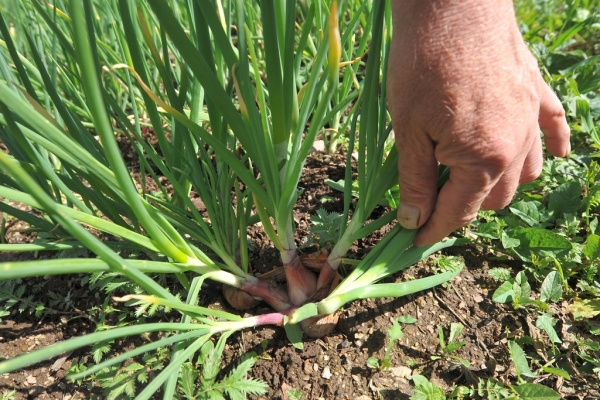
Chinese garlic is easy to grow and maintain.. Despite some capriciousness, it is easy to get used to changing weather conditions. Therefore, it is grown in many regions of Russia.
Grown onions can be stored for up to one year in the refrigerator. They will not lose taste and will not differ from shop.
The main thing to remember is that more than three years they can not be planted in the same place. They will simply begin to grow strongly, and, on the contrary, they will lose power.
